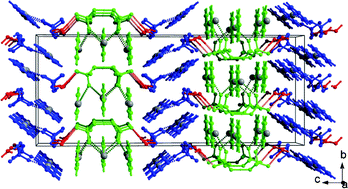Thermal and chemical decomposition of di(pyrazine)silver(ii) peroxydisulfate and unusual crystal structure of a Ag(i) by-product†‡
Abstract
High purity samples of a

* Corresponding authors
a
ICM, The University of Warsaw, Żwirki i Wigury 93, Warsaw, Poland
E-mail:
pleszcz@icm.edu.pl
Fax: +48 22 5540801
Tel: +48 22 5540828
b
Faculty of Chemistry, The University of Warsaw, Warsaw, Poland
E-mail:
wg22@cornell.edu
Fax: +48 22 8225996
Tel: +48 22 8220211
High purity samples of a

 Please wait while we load your content...
Something went wrong. Try again?
Please wait while we load your content...
Something went wrong. Try again?
P. J. Leszczyński, A. Budzianowski, Ł. Dobrzycki, M. K. Cyrański, M. Derzsi and W. Grochala, Dalton Trans., 2012, 41, 396 DOI: 10.1039/C1DT10744E
To request permission to reproduce material from this article, please go to the Copyright Clearance Center request page.
If you are an author contributing to an RSC publication, you do not need to request permission provided correct acknowledgement is given.
If you are the author of this article, you do not need to request permission to reproduce figures and diagrams provided correct acknowledgement is given. If you want to reproduce the whole article in a third-party publication (excluding your thesis/dissertation for which permission is not required) please go to the Copyright Clearance Center request page.
Read more about how to correctly acknowledge RSC content.
 Fetching data from CrossRef.
Fetching data from CrossRef.
This may take some time to load.
Loading related content
